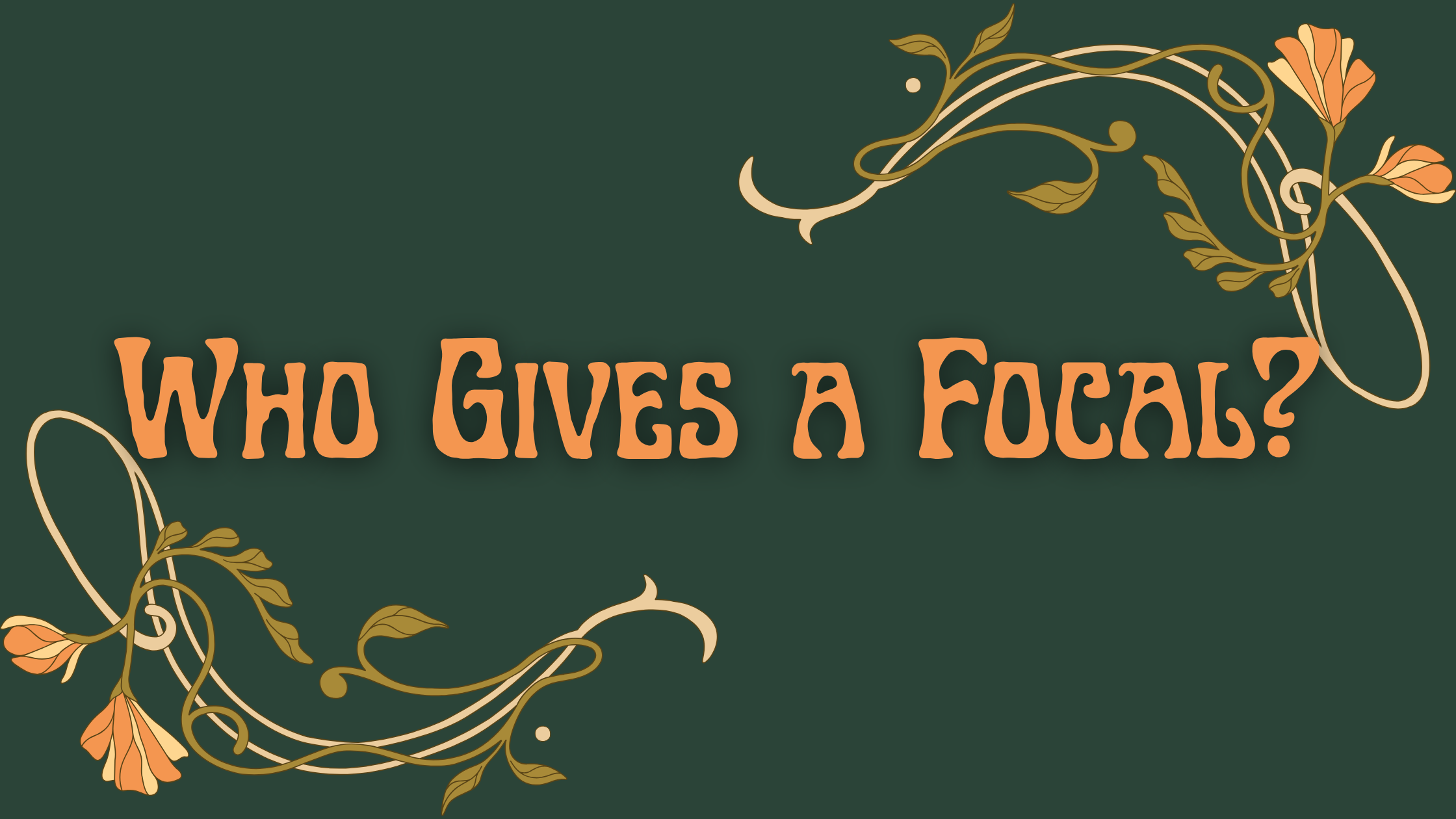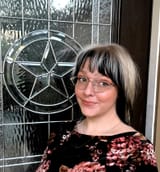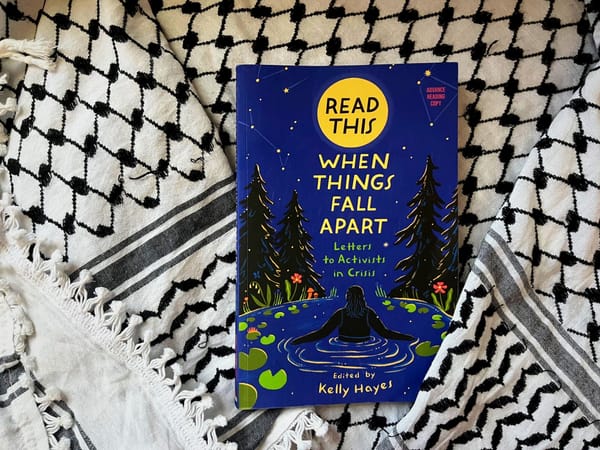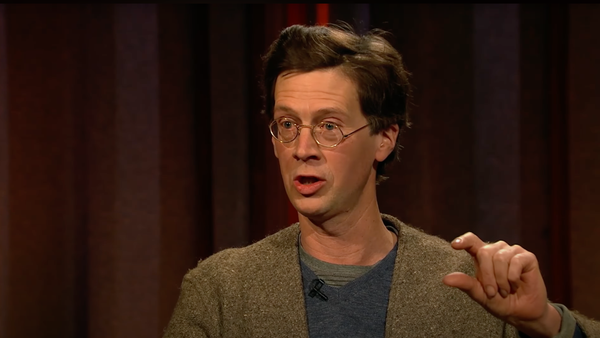This October, Brigid Tells Us to Honor Ourselves and Our Mistakes
It's time to recognize all that you have labored for in the summer. Don’t be the púca that pisses on your own blackberries.
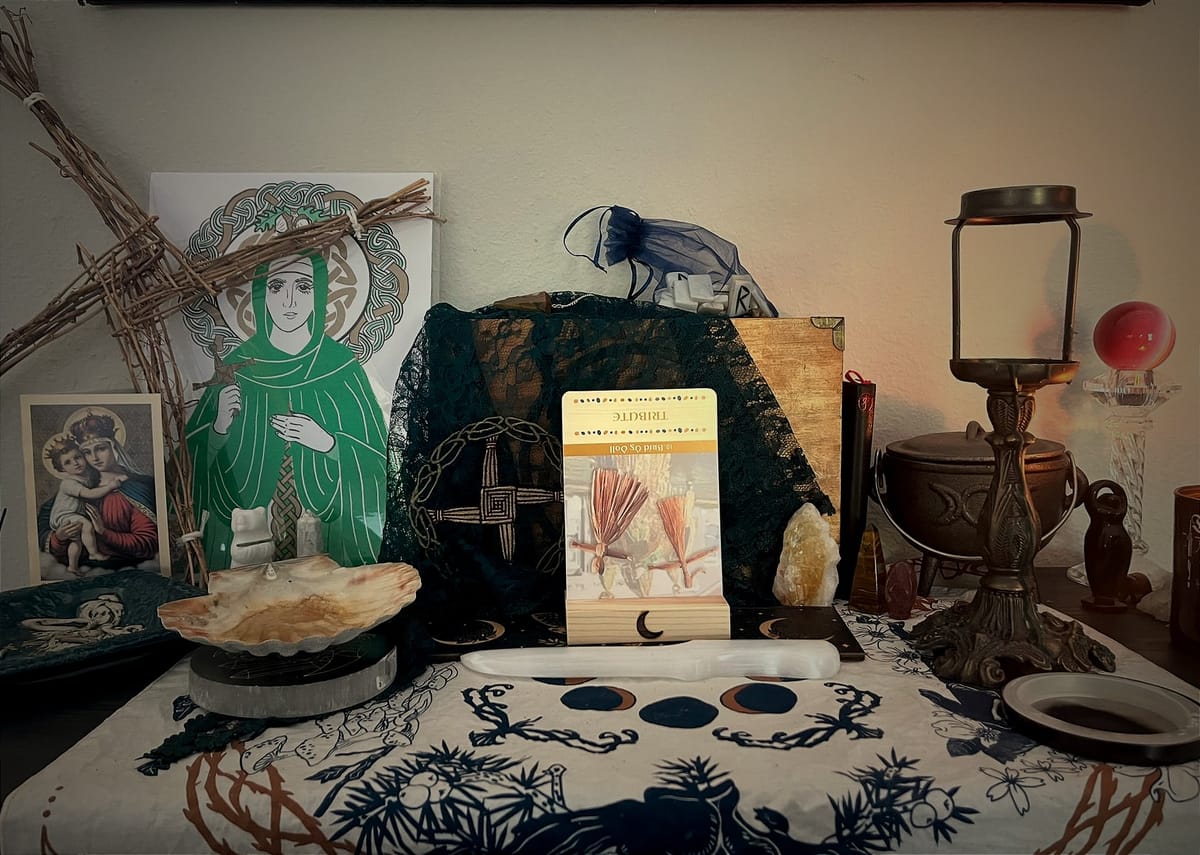
Mo Dhia. I made a mistake on Monday. What happened was this: I filmed an Instagram reel explaining what this newsletter was that took hours to film and edit, even longer because I’d never done it before.
After all the hours I spent writing a script, practicing what I would say, shooting, and reshooting and editing, when I finally posted it, I realized I made so many errors in my Irish! Tá náire orm! The mortification was on me.
When it dawned on me that I misspoke "ligí dom a míniú" instead of "ligí mé duit a míniú," I was about 2.5 seconds away from a total crash out. All that work and now this error will be enshrined in the annals of the Who Gives a Focal? lore.
I don’t love the whole peddling my wares on social media thing. I don’t love TikTok, and I certainly don’t love putting my face to video for the internet to pick apart, but here we are. I come from an era of the internet that treasured anonymity above all else, which has changed a lot with the advent of Twitter, Instagram, TikTok, and Facebook. I am also very self-critical and anxious, so I don’t need a bunch of strangers on the internet to tell me what I already know.
You can imagine that there’s not a whole lot of chances in Texas to use my Irish as often as I'd like. Lately, though, I’ve been trying to use it more and more in my daily life in emails, or in my writers group, or with friends. And while I write as Gaeilge all the time, where I can check focloir.ie, reference my notes, and recheck and retranslate back into Béarla before hitting send, speaking is whole different matter.
I spent a little time in the Gaeltacht this spring on retreat with Molliefest, which was a trip of around 70 Irish students of Mollie Guidera from all over the world. What I tell everyone when they ask me about that trip is that I went for the language and got so much more. I will most likely be writing about it a lot, but I'll tell one scéal beag, little story, that I thought portended a very successful trip. (Readers, it did not, but that is for another day).
On our first morning hike, which took us up the cliffs of Inis Mór to a spot where we would watch stonelifter David Keohan lift a 400lb stone, I got to practice some of my Irish with one of the many múinteoirí Breandán. I was describing my trip with my wife into Kildare to see the Curragh and Brigid’s Well. I said something like, “Bhí muid le your man i gCill Dara…” We were with your man in Kildare…
His face lit up that not only had I used my Irish, but I’d also used some slang. (“Your man,” is like saying “that guy over there,” “that rando.”) It was my first prolonged conversation as Gaeilge and bhí bródúil asam. I was proud of myself, and I thought I would maybe earn a coveted gold star that evening. (I did earn a gold star that day, but not for this.) But there were other times on the island I was too shy, or too ashamed of the reasons I was there to speak with confidence.
This is not a unique phenomenon among Irish speakers even in Ireland, and it’s definitely not unique to any language learning. Have you ever been to a high school French class? Nobody wants to speak there either. That shame comes from a lot of places, and there are plenty of Irish learners and speakers who can speak to this ingrained cultural shame more articulately than I. What I do know, is that everything is a practice. We misspeak in English, or any of our first languages daily, so why are we so hard on ourselves when we don’t get it right every single time in a language we are actively learning?
In the first episode of the “Irish With Mollie” podcast, hyperpolyglot Richard Simcott speaks on the myth that adults make poor language learners. There’s this idea that you have to learn things like language when you’re young because it’s easier, but actually it’s not all that easier. We think it is because we don’t remember how hard it was to learn to speak as babies, but it also took us a really long time to get the words right then. How many times did our caretakers correct us, or how long did it take for us to speak a grammatically correct sentence? Sometimes, I still don’t do that!
So after my shower epiphany about my "horrible" Irish on Monday morning, I took a deep breath, and I did my yoga like I always do. Even though it was light, I could feel my hips on fire from days spent being lax in my routine. I made coffee do mise agus mo shinsir, for myself and my ancestors. I mistakenly poured my apple crumble creamer into the cup for my grandmother (she liked her coffee black), but I chuckled and told her that she liked to try new things anyway. Maybe she'd like this. I left my phone inside and watched the blue jays and cardinals hop around my yard for a while. I tried to remember all the little successes I’ve had over the year in my speaking, the many pinn glasa given to me by my teacher that I am eternally grateful for. I do not fear the peann glas, I fear my own self judgement and the judgement of others. Julia Cameron calls this the “Censor” in our brains that we’ve acquired over the course of our lives that seeks to stifle us, keep us from pursuing creativity and joy.
It's the first day of October, and the Irish for October is Deireadh Fómhair, which means “end of autumn.” Our harvests are in their prime, and it’s some of the last days to reap them before Samhain lest the púca come to spit, or piss, etc. on the berries and make them inedible. Yes, that is real folklore.
For me, this means taking stock of this journey, not just in learning Irish, but the one where my whole life got turned upside down this summer and now I write to you weekly, and I post on social media videos of myself as Gaeilge—I’ll say it: Tá mo Ghaeilge go hálainn. My Irish is beautiful, and it’s beautiful because I said it, errors and all. In fact, there is an Irish séanfhocal (proverb) that says: Is fearr Gaeilge bhriste ná Béarla cliste. Broken Irish is better than clever English.
If you made it this far, I will give you your first biweekly oracle pull from my Brígid deck by Moon Mná. How I acquired this deck is a story for another newsletter. Suffice it to say, I knew I needed this to tend to the fire within that I kept pouring water on. I pull this card with intention for us, wherever it finds us, and hope we heed it well.
Oracal ó Bhríd
Oracle from Brigid
Tribute—Bríd Óg Doll in Reverse
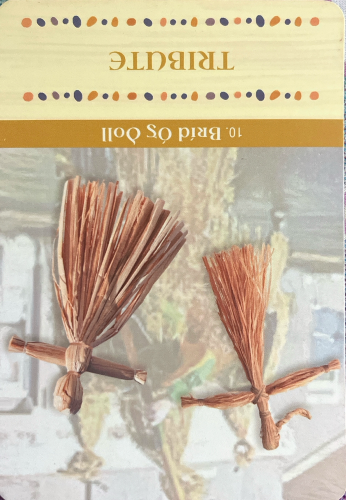
A Bríd Óg is a doll often woven from straw or reeds around Imbolg, which is also St. Brigid’s feast day on February 1. Similar to how you would treat a Brigid’s Cross, you would put all of your intention (sometimes seeds for fertility) for the coming parts of the year and keep it in your home until next Imbolg. You then weave another and burn or bury the old one as thanks for the blessings bestowed throughout the year.
Reversals in this deck indicate blockages. I devote a lot of myself to Brigid, and my creativity is especially in large thanks to her, but this card in reverse indicates that it’s time to go inward, to pay tribute to the self. Are we honoring ourselves the way we honor others in our lives? Maybe it’s time to recognize all that we have labored for in the summer, cast out the Censor within, and honor where we are today. We've planted the seeds, and even if we weren't as diligent and dutiful as we hoped, we did plant them. Don’t be the púca that pisses on your own blackberries.
Grá Mór,
Sam
Who Gives a Focal is an entirely free and reader supported publication, which cannot exist without readers like you. We are just getting started and would love for you to support us in our trial months today if you like what we do.
